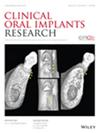In vitro assessment of cementation of CAD/CAM fabricated prostheses over titanium bases. A systematic review
Abstract
Objectives
The objective of this study is to investigate the outcomes of clinically relevant laboratory studies regarding the cementation of implant-supported restorations over ti-bases.
Materials and Methods
The present study has been conducted according to PRISMA statement. An electronic search was performed, including publications up to March 2024, to identify studies investigating the parameters affecting the cementation between ti-bases and CAD/CAM prostheses. An assessment of the internal validity was performed, using a custom-made risk of bias tool (QUIN).
Results
From the included studies, 40.1% were reported on luting systems, 25% on ti-base surface treatment, 25% on restoration surface, 21.8% on restoration material, and 18.7% on ti-base height. The majority of the included studies were associated with a medium risk of bias. In the absence of micro-retentive features, air-abrasion of ti-bases with a minimum height of 3.5 mm can be beneficial for restoration's retention. The bonding performance can vary not only between different bonding systems but also for different applications within the same system, based on a restoration's material and surface treatment as well as on ti-base height and surface treatment.
Conclusions
The height of the ti-base seems to be the prevailing factor as it constitutes the prerequisite for other modifications of the bonding surfaces to have an advantageous effect. Since the parameters that can affect bonding performance between ti-base and restoration can interact with each other, it is important for the clinician to focus on verified bonding protocols.

 求助内容:
求助内容: 应助结果提醒方式:
应助结果提醒方式:


